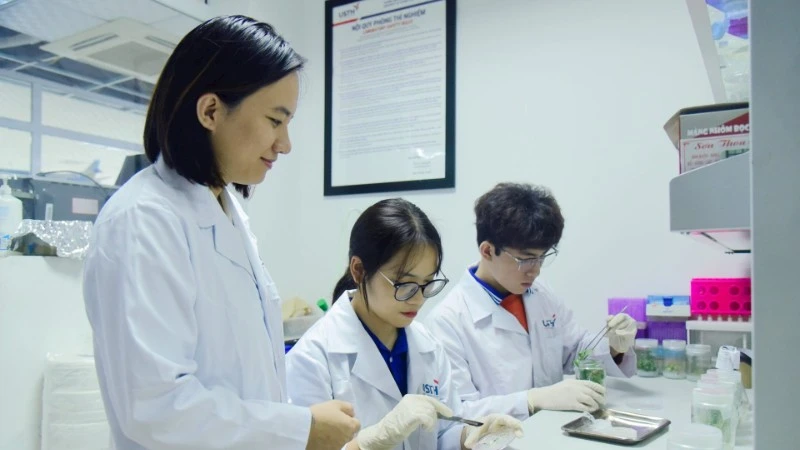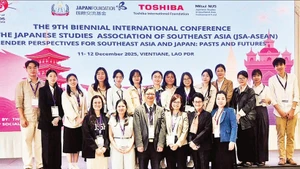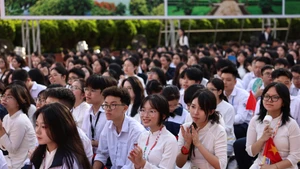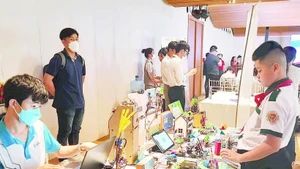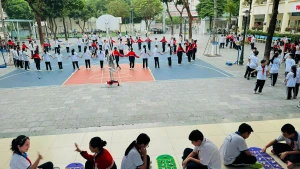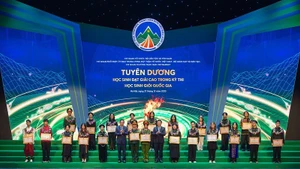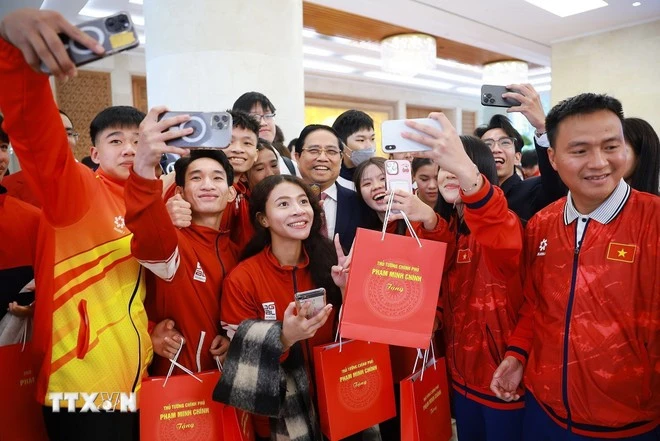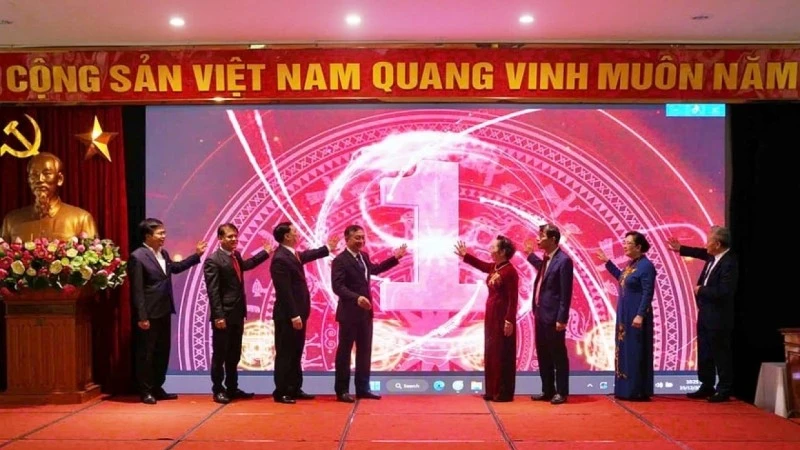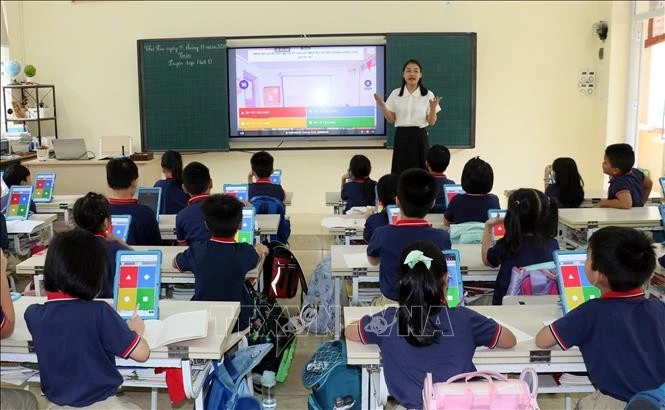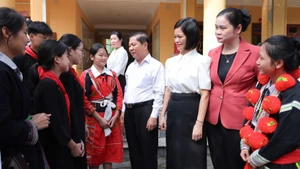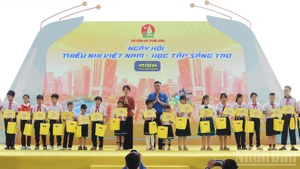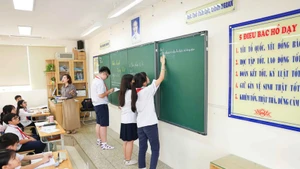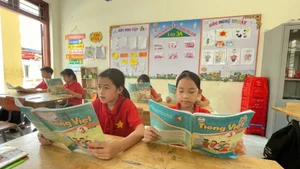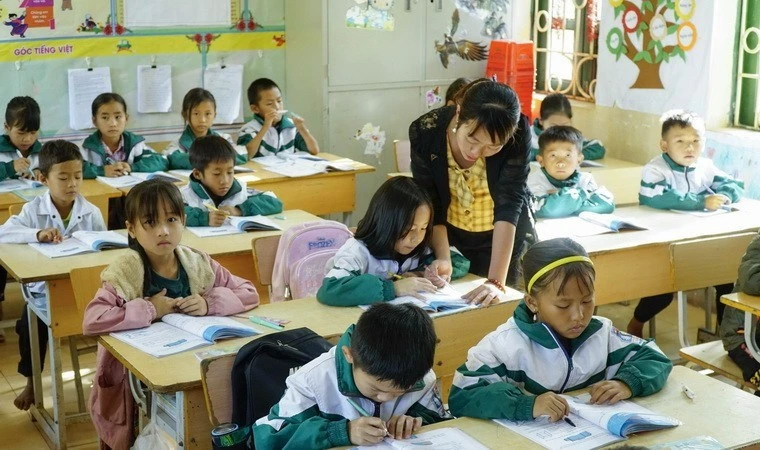A research-oriented training model
USTH, under the Viet Nam Academy of Science and Technology, was established in 2009 under an intergovernmental agreement between Viet Nam and France, with the vision of becoming an excellent, internationally standardised university for science and technology training.
The university currently offers 20 undergraduate programmes, including three Viet Nam–France dual-degree programmes; six dual-degree master’s programmes; seven full-time PhD programmes at the university; and several doctoral training programmes in cooperation with French partners. All programmes focus on cutting-edge science and technology fields aligned with Viet Nam’s socio-economic development strategy and France’s strengths in education and research.
According to Professor, Doctor Dinh Thi Mai Thanh, Rector of USTH, students, graduate students, and doctoral candidates at the university study entirely in English and have opportunities to conduct research and study in France and other developed countries. Each year, USTH trains hundreds of bachelors, masters, engineers, and doctors with exceptional foreign language skills, professional qualifications, and integration capabilities. Over 90% of graduates find employment or pursue higher-level studies.
The university currently offers 20 undergraduate programmes, including three Viet Nam–France dual-degree programmes; six dual-degree master’s programmes; seven full-time PhD programmes at the university; and several doctoral training programmes in cooperation with French partners. All programmes focus on cutting-edge science and technology fields aligned with Viet Nam’s socio-economic development strategy and France’s strengths in education and research.
The university is one of the few in Viet Nam accredited by the High Council for Evaluation of Research and Higher Education of France (HCERES). This not only affirms the quality of training but also contributes to providing high-quality human resources for science and technology in Viet Nam in the age of globalisation.
To build this workforce, the university adopts a “research-integrated training” model, helping learners improve practical skills to meet the demands of the global science market. The school attracts top Vietnamese academics and researchers from abroad to teach and conduct research. At the same time, it promotes international cooperation with other countries to jointly train in strategic technology fields such as nuclear power, semiconductors, remote sensing, and biotechnology—attracting learners through domestic and international scholarship programmes.
Citing the biotechnology field as an example, Associate Professor, Doctor Nguyen Hai Dang, Vice Rector of the university, shared: “This is a discipline that addresses urgent challenges such as food security, healthcare, and environmental protection”. USTH implements training and research programmes applying biotechnology to smart agriculture, biomedicine, pharmaceuticals, and environmental sciences with the participation of highly qualified lecturers from both Viet Nam and abroad, as well as leading industrial partners. Students are exposed to advanced training models through comprehensively equipped laboratories and international joint labs and high-quality research facilities built in cooperation with French partners at the Viet Nam Academy of Science and Technology.
More importantly, USTH focuses on developing critical thinking and entrepreneurial spirit, helping students not only master technical skills but also understand the social value of the products they create. This aligns with Resolution No. 57-NQ/TW’s direction of transitioning from mastering technology to innovating technology.
Affirming that international cooperation is a launchpad for students to intern abroad, Tong Si Son, Vice Dean of the Faculty of Space and Applications, noted that the faculty’s training programmes are built and directly taught by lecturers and scientists from a consortium of four French universities and research institutes: Paris Observatory, University of Paris-Est Créteil, University of Paris Diderot, and the French National Centre for Space Studies. The faculty adheres to the principle of prioritising overseas internships for students, followed by internships at domestic research institutes and enterprises. All students in the faculty participate in research projects and graduation internships with scientists under team projects and research programmes.
Bridging global knowledge
Like many other universities, USTH faces significant challenges: limited investment resources for high-quality human resource education, especially for applied research and modern equipment, which hinders access to advanced technologies. Attracting and retaining high-quality lecturers and researchers, particularly international experts, remains a difficult issue.
Evidence from the Space Science and Satellite Technology programme shows that this is an interdisciplinary field requiring collaboration among experts in astrophysics, mechanics, electronics, automation, information technology, and geoinformatics. However, the pool of lecturers and scientists in this field in Viet Nam is still limited and does not cover all necessary areas. This makes it difficult to develop a comprehensive, internationally updated training programme. Core technologies in satellite manufacturing and space observation are often not shared by developed countries.
To build a high-quality workforce, the university leadership believes that a systematic, long-term strategy is needed—from regularly updating teaching materials and training programmes to investing in equipment and practical facilities, attracting excellent lecturers and international experts, and seeking opportunities to support students’ international internships and research.
Additionally, there must be coordinated cooperation among the State, universities, and businesses, including adjustments to financial mechanisms, increased infrastructure investment, and the development of training standards aligned with industry needs. International public universities like USTH should continue to play a pioneering role in connecting global knowledge and promoting multilateral cooperation to build a workforce capable of leading future high-tech industries. According to Associate Professor, Doctor Nguyen Hai Dang, creating a generation of high-quality young scientists capable of leading advanced technology projects requires combining five factors: excellence, professionalism, pioneering spirit, integrity, and service to society.
